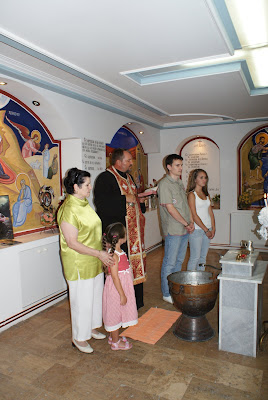
TURKISH COFFEE - AN ESSENTIAL FOR DAILY LIFE IN MACEDONIA
History of Turkish Coffee
The Europeans got their first taste of Turkish Coffee from the Ottoman Turks, who brought coffee to the West. They were great coffee drinkers, both at home and in public houses, the forerunners of our cafs, which started to spring up across the Islamic countries. Turkish coffee became part of the Turks life known as the "Wine of Islam" and the "Milk of Chess Players and Thinkers".
Turkish coffee is derived from the famous Arabica coffee bean, often the addition of the aromatic Cardamom spice is added to the coffee while it is being ground. Another method boils seeds with the coffee and lets them float to the top when served.
Traditionally Turkish Coffee has six levels of sweetness from ranging from very sweet to black. Sugar is not added to the coffee after it has been served. As the coffee begins to heat, it begins to foam. A rule of the traditional Turkish coffee ceremony states that if the foam is absent from the coffee, the host loses face. Turkish coffee is served hot from a special pot called a cezve.
In order to make your own brew of "Milk of Thinkers", heat water in a pot, add coffee and sugar to taste. Bring to boil. Pour half of the coffee into demitasse cups and return the remaining coffee to the heat and bring back to boil. Spoon off the foam and gently place without stirring. You'll need 1 1/2 cups of cold water, 4 teaspoons of strong dark roast coffee and about 4 teaspoons of sugar.
Telling Your Future From Turkish Coffee Readings
Leave to drain on saucerCoffee Readings are psychic readings done by using a cup of coffee as though it's a crystal ball. Ground Turkish coffee is mostly used when cup readings are done. The residue is left at the bottom of the cup after the coffee is drunk, when the cup is then covered with a saucer, shaken, and turned over (up side down) into the saucer, and left to dry.
The patterns formed on the inside of the cup trigger psychic insight; and are interpreted according to what they mean to the seer. Once you allow the information to flow intuitively, and with little training you can soon be well on your way to reading your own cup.
Firstly, the coffee should be drunk only from one side of the cup. When the coffee is finished, the saucer is placed on top of the cup, and a wish is made. With the saucer still covering the top, the cup is held at chest level and turned counter-clockwise a few times. Following this, the cup is turned upside down onto the saucer, and left to cool. Sometimes a coin may be placed on top to make the cup cool faster and to dispel bad omens that could be read from it. When the coffee cup is cool enough, someone other that the person who drunk the coffee opens the cup, and starts interpreting the shapes for divination.
Coffee cup reading is a widespread and popular fortune telling method, which speaks of both the past and the future. For divination purposes, the coffee cup is considered in two horizontal halves. The shapes in the lower half talk of the past, whereas shapes in the top half talk of the future. The shapes that feature on the right side are usually interpreted positively, while shapes on the left are interpreted as signs of bad events, enemies, illnesses, troubles, and the like. According to another belief, the coffee cup can tell the past but it can only foretell forty days into the future. Hence the practice of coffee cup reading cannot interpret the future that lies beyond forty days. In addition, if, at the reading stage, the cup and the saucer are firmly stuck, and the person is having trouble separating them, it is believed that this particular cup should not be read. This is a case of “prophet’s fortune telling,” where it is assumed that the person who has drunk from the cup is lucky, and does not need to have their fortune read. Similarly if a large chunk of coffee grounds should fall to the saucer as the cup is being separated, the interpretation is that the owner of the cup will soon be rid of all troubles and sadness. According to another standard interpretation, if coffee drips onto the saucer as the cup is opened, the person who drunk is to soon shed tears.
After the interpretation of the shapes within the cup, it is time to interpret the shapes in the saucer, where the majority of the coffee grounds have dripped. The saucer is generally interpreted as the home of the person whose cup is being read, and it is said to give clues about their domestic life. If there are large blank areas on the saucer where the coffee has not touched, the interpretation is a sense of relief that will be experienced in the person’s home. If however the shapes on the saucer are confused and disorderly, this is taken to mean that there will be a funeral or illness-related crowd in this person’s house. During the reading, the reader holds the saucer straight and waits for coffee grounds and coffee to flow. At the end of the reading, the saucer is flipped over once. At this stage, if a drop of coffee manages to get behind, and half way into the saucer’s radius, this is taken as a sign that the wish made will come true. Another important consideration while reading someone’s coffee cup is not to say things that will make a person too happy or too sad.
(Photo: This was Dejan's coffee cup one morning and he swears it looks like a baby. I think he just has baby on the brain.)


















































